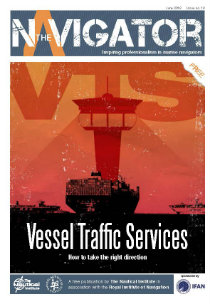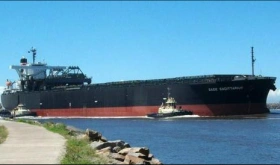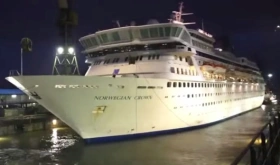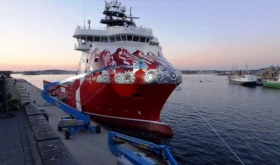At about 1450 on 8 October 2010, the partially loaded Liberian registered bulk carrier Grand Rodosi collided with the Australian fishing vessel Apollo S in Port Lincoln, South Australia. As a result of the collision, Apollo S, which was unmanned, was crushed against the wharf and sank shortly afterwards. Grand Rodosi sustained several relatively small holes in its bow shell plating.
The ATSB investigation found that, despite the pilot ordering astern movements, the ship’s main engine did not run astern in the 5 minutes leading up to the collision. The chief engineer, who was operating the main engine start/fuel lever in the engine room control room, did not allow sufficient time for starting air to stop the ahead running engine. Consequently, when fuel was introduced into the engine, it continued to run ahead, despite the astern telegraph orders.
The investigation also found that
- the chief engineer’s mistake was not identified by anyone on the ship’s bridge or in the engine room control room until after the collision
- the master/pilot information exchange was less than optimal
- bridge resource management principles could have been better applied during the passage to the berth
Newlead Bulkers, the ship’s managers, as further preventive action in order to avoid re occurrence of similar incidents:
- have amended their on board procedures to ensure crew monitor the direction of main engine turning after each engine order.
- increased awareness through their fleet about this type of incident occurring.
Flinders Ports, the provider of pilotage services in Port Lincoln, decided the following actions as a result of the incident:
- revise their risk assessment for the manoeuvre being undertaken during Grand Rodosi’s berthing to include new preventative, as well as restorative, measures to be followed
- revise the port’s pilotage passage plan to include indicative courses to be followed, both while transiting the channel and outside of it, and speed zones. This will enable the crews of visiting ship to be better informed about the pilotage passage their ship is about to undertake.
It is of paramount importance that pilots and ships’ crews maintain awareness of main engine movements and check engine tachometers following every movement to ensure that the engine is operating in the desired direction. This is particularly important when main engines are being operated in manual control.
In addition, pilots and the bridge teams should ensure that all the necessary information is exchanged at the beginning of a pilotage, including courses to be followed and speeds at critical positions during the passage to or from the berth/anchorage, so that all members involved in the pilotage have a shared mental model and therefore, a good understand of the pilotage before it begins.
Source: ATSB















Leave a Comment